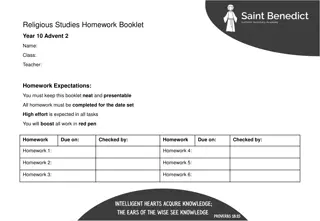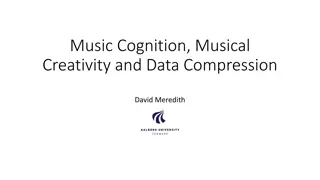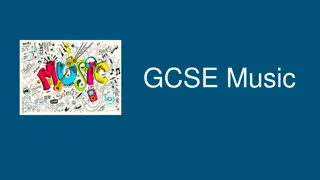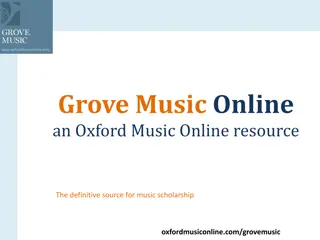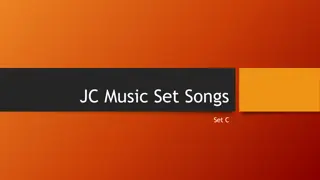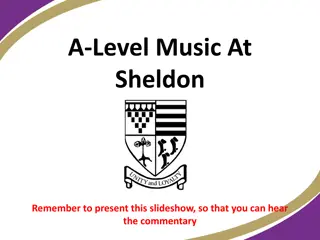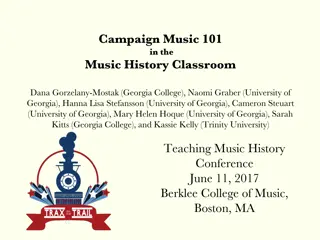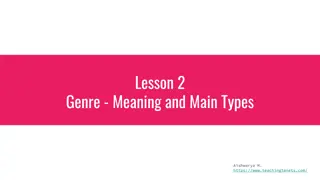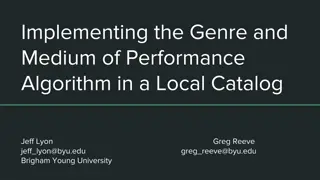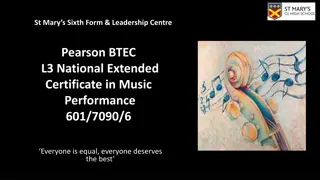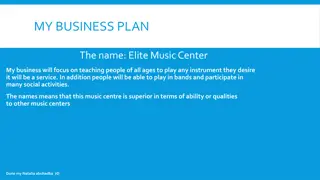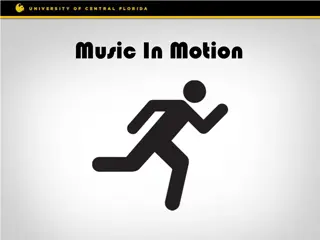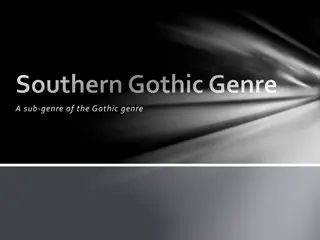Understanding Genre in Popular Music: Exploring Uses and Interpretations
Delve into the intricate world of music genre as it influences perceptions, expectations, and industry strategies. Discover the dynamic interplay between genre, style, and audience reception while unraveling the significance of genre as a navigational tool in music landscapes.
Download Presentation

Please find below an Image/Link to download the presentation.
The content on the website is provided AS IS for your information and personal use only. It may not be sold, licensed, or shared on other websites without obtaining consent from the author. Download presentation by click this link. If you encounter any issues during the download, it is possible that the publisher has removed the file from their server.
E N D
Presentation Transcript
Genre and the Pop Star Dr Nathan Wiseman-Trowse School of The Arts The University of Northampton
Genre and the Pop Star Genre and Style The Uses of Genre The Rules of Genre Similarity and Difference The Semiotics of the Pop Star 2
What is Genre? Types of popular music (hip hop, soul, rock, pop, country, folk etc.)? A range of music that shares common features? Genre as a code both categorising or codifying music, and defining the terms under which music is produced, distributed and consumed Genre and sub-genre Constantly debated and vaguely demarcated 3
What do we get out of it? We know what to expect as listeners and consumers Pleasure is gained from seeing expectations met (or confounded) Formal generic patterns represent questions, values and problems encountered in society Maintaining capitalist orthodoxy? 4
The Uses of Genre Useful to discuss music and audiences at fan level (both listening and producing) Useful to discuss music and audiences at a scholarly level Shapes strategic planning for record companies Defines ancillary media such as radio, the music press and music television 5
Genre vs. Style Genre refers to the musical form (fast dance track, slow ballad) but these might be performed in a number of styles (Moore, 1993). Therefore rock, pop and acoustic are styles rather than genres Ten Masked Men Play That Funky Music (http://www.youtube.com/watch?v=cwFuyvz7RIs) Genre mid-paced pop/funk; Style extreme metal Is this how most music consumers understand the term? 6
Genre as Orienting Strategy Genres as systems of orientations, expectations and conventions that circulate between industry and subject (Toynbee, 2000). Genre is not inherent in the text but imposed from without The industry, the text and the audience negotiate the idea of genre 7
The Rules of Genre Five rules of genre (Fabbri, 1982): Formal and technical rules direct performance (playing and recording) conventions Semiotic rules order the way that the music (as a set of formal and technical rules) should be interpreted Behavioural rules guide the performance rituals of the audience, mediators and performers in a range of settings Social and ideological rules govern what the music stands for Commercial and judicial rules sanction the rewards and critical valuations made in the genre culture 8
The Pop Star If genre is about similarity then what role does the pop star play? Elvis Presley The Milton Berle Show 1956 (https://www.youtube.com/watch?v=z U4i5gyFK1s) After the Berle performance Presley is only filmed from the waist up on the Ed Sullivan Show Conflation of musical influences Sexuality and rebellion Visual representation Prioritisation of youth audience Photo from Wikipedia http://en.wikipedia.org/wiki/Elvis_Presley 9
The Star as Commodity Capitalism Use Value (material cost) and Exchange Value (what it will sell for) The difference = PROFIT Jean Baudrillard - Enhanced Use Value (cultural values) Commodities (records) absorb cultural value David Buxton - Pop star as economic necessity Ed Sheeran at Academy 1, CC BY 10
Guy DeBord - Society of the Spectacle Culture turned completely into commodity must also turn into the star commodity of the spectacular society In the second half of this century culture will hold the key role in the development of the economy, a role played by the automobile in the first half, and by railroads in the second half of the previous century (1967). 11
Making Meaning Saussure s model of structural linguistics allows us to read pop stars as sentences, creating meaning through individual signs and the ways in which they are combined. Paradigmatic Axis dinosaur remained chair fridge roced carpet dog stayed train The cat sat on the mat Syntagmatic Axis Paradigmatic (parole) The sign Syntagmatic (langue) The code 12
Structuring Signs Parole (paradigmatic) an example of a sign (hair, make-up, particular kinds of tattoo, vintage dresses, voice, physical performance) Langue (syntagmatic) The code that gives it context (poplar culture and popular music more specifically) Amy Winehouse as a sign system What makes her different and what makes her similar? To what ends? The iconography of the pop star is constructed semiotically in relation to the codes of specific popular music discourses Genre unites and defines, whilst spectacular signification marks out the individual performer as a brand Amy Winehouse f4962007 crop, CC BY-SA 13
References DeBord, G. (1967). The Society of the Spectacle. Black and Red. Fabbri, F. (1982). A Theory of Musical Genre: Two Applications. In P. Tagg and D. Horn (eds), Popular Music Perspectives. IASPM. Moore, A. (1993). Rock: The Primary Text. Open University Press. Toynbee, J. (2000). Making Popular Music. Arnold. 14
Further Reading Brabazon, T. (2012). Popular Music: Topics, Trends and Trajectories. Sage. Buxton, D. (1983). Rock Music, the Star System and the Rise of Consumerism. In Frith and Horn (eds) On Record. Routledge. Fiske, J. (2000). Introduction to Communication Studies, Routledge. Machin, D. (2010). Analysing Popular Music. Sage. Wall, T. (2013). Studying Popular Music Culture. Sage. 15





